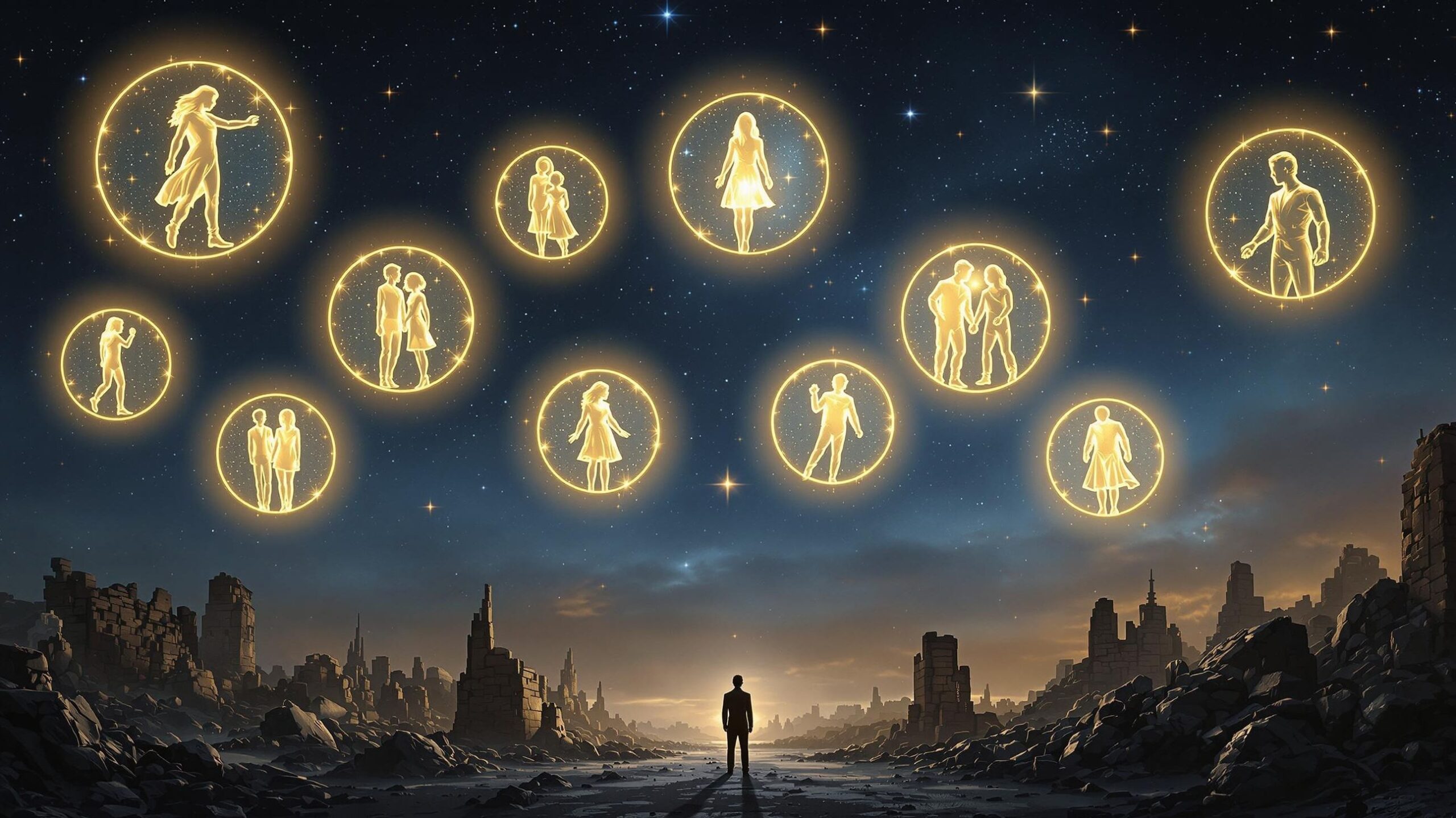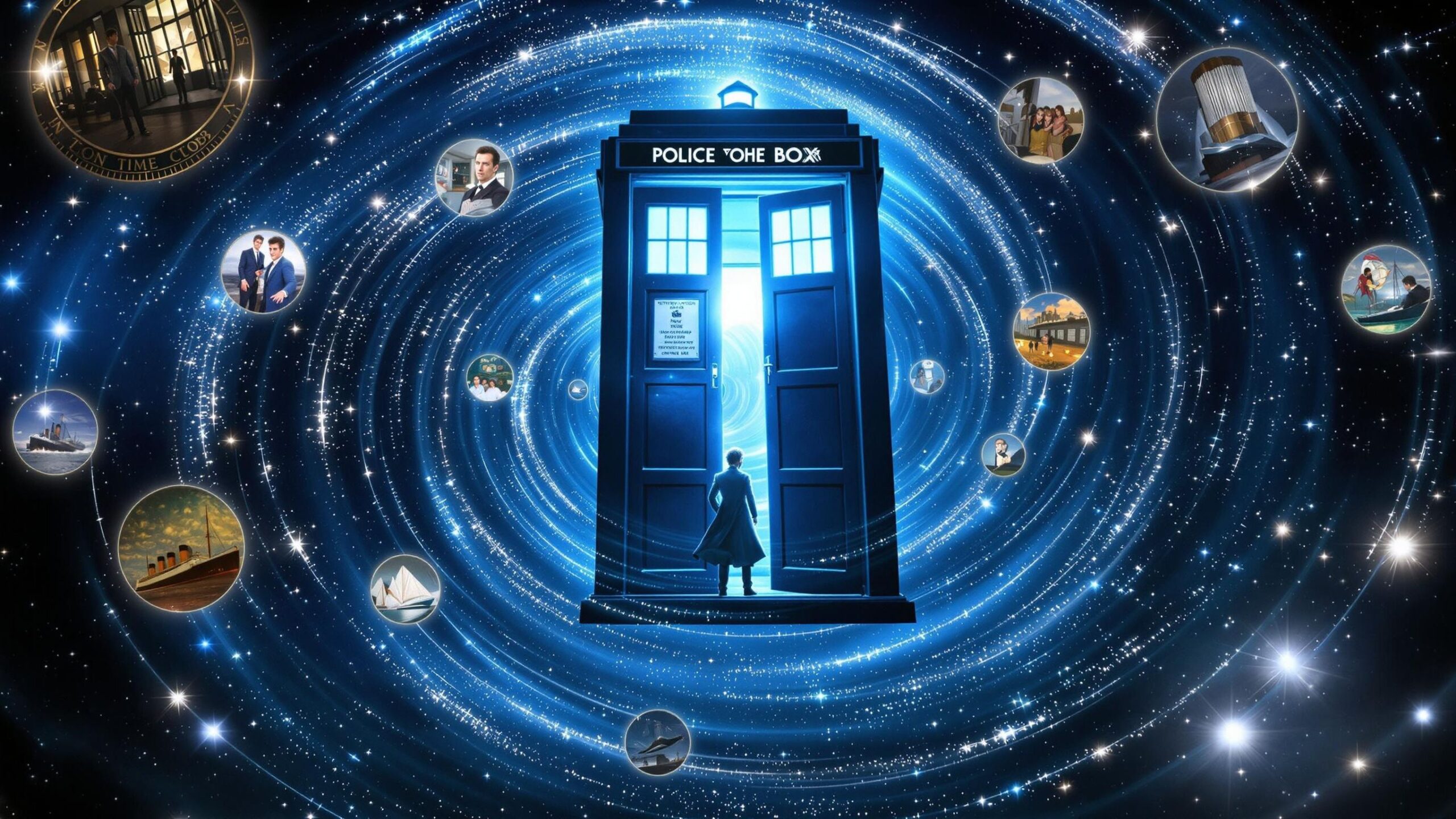Few villains in science fiction are as instantly chilling as the Daleks. With their harsh, grating voices, emotionless ideology, and ruthless efficiency, they’ve been terrifying viewers of Doctor Who for over six decades. Created by Terry Nation in 1963, the Daleks quickly became iconic not because of their appearance—but because of what they represent: hatred stripped of empathy. They’re not just metal shells with lasers; they’re nightmares made real. The Daleks don’t kill for fun—they kill because they believe it’s necessary. Whether they’re invading Earth, exterminating entire species, or psychologically tormenting the Doctor, these moments reveal why the Daleks remain the most horrifying monsters in the Whoniverse.
#10: The Dalek Asylum wakes up (Asylum of the Daleks, 2012)
What’s worse than a room full of dormant Daleks? A room full of mad Daleks. When the Eleventh Doctor, Amy, and Rory are sent into the Dalek Asylum, the tension ratchets up as they navigate a space littered with seemingly deactivated Daleks. The moment those rotting shells twitch back to life, whispering and screeching in disjointed bursts of violence, is pure horror. It’s the idea that the Daleks fear something—and that thing is their own kind going insane—that makes this moment chilling. The Asylum turns the Daleks’ own superiority complex against them, creating a haunting metaphor for what happens when even monsters become too monstrous for themselves.
#9: The Dalek invasion of Earth (The Dalek Invasion of Earth, 1964)
This classic serial introduced the haunting visual of Daleks rolling through the streets of London. The sight of these alien invaders gliding past iconic British landmarks created a national shockwave at the time and remains deeply unsettling even today. The episode’s atmosphere—desolate cities, enslaved humans, and resistance fighters clinging to hope—makes this one of the bleakest portrayals of a Dalek occupation. This story established that the Daleks were not confined to distant galaxies; they could come here. And when they do, they bring with them slavery, despair, and a crushing reminder of how easily civilization can be dismantled under the heel (or suction cup) of tyranny.
#8: Dalek kills Van Statten’s men while chained (Dalek, 2005)
In the Ninth Doctor’s first series, we meet a lone Dalek in captivity. At first, it seems powerless trapped behind shields, without weapons. But when it absorbs energy from Rose, all hell breaks loose. What follows is a brutal, claustrophobic sequence where the Dalek slaughters guards with terrifying precision, even while still chained to the floor. It uses its casing, its intellect, and its sheer hatred to dismantle everything in its way. The fear here doesn’t come from armies—it comes from one Dalek demonstrating why one is enough to level an entire base. It’s a masterclass in slow-building dread that reminds us: a cornered Dalek is still the most dangerous thing in the room.
#7: “Elevate.” (Dalek, 2005)
This single word changed the Daleks forever. For decades, fans joked about how easily they could be defeated by a staircase—until Dalek flipped the script. As the lone Dalek chases Rose and the soldiers through a complex, it comes to a stairwell… and hovers. “Elevate,” it growls, as it rises slowly, inexorably, toward its prey. The moment shattered all illusions of escape and delivered a brutal realization nowhere is safe. You can’t outrun them. You can’t outmaneuver them. The Daleks adapt. And once they do, the fear multiplies. That slow, hovering ascent might be one of the most iconic villain upgrades in sci-fi television.
#6: The Dalek Emperor reveals his God complex (The Parting of the Ways, 2005)
When the Ninth Doctor confronts the Dalek Emperor in the season finale, he doesn’t find a war machine—he finds a prophet. The Emperor has gone mad, calling himself the “God of all Daleks,” and declaring his new creations pure because they were made from human remains. That alone is grotesque, but it’s the Emperor’s calm, fanatical voice that sends chills. “Worship me,” it commands, and its followers obey without question. The blending of religious fanaticism with technological horror makes this moment disturbingly resonant. It’s no longer just extermination for efficiency—it’s genocide as doctrine. The emperor’s madness elevates the Daleks from terrifying to transcendentally evil.
#5: The Daleks surround and kill Harriet Jones (The Stolen Earth, 2008)
In a hauntingly abrupt and emotionally heavy moment, former Prime Minister Harriet Jones sacrifices herself to send a message across space to alert the Doctor. As she stands firm, facing down a Dalek squad invading Earth, she knows the outcome. “You know nothing of any human,” she declares, and with dignity, prepares to die. The Daleks—unmoved, unmerciful—exterminate her instantly. There’s no speech, no pause. Just cold, immediate death. What makes this moment terrifying isn’t the violence—it’s the certainty. Harriet Jones’s strength is irrelevant to them. They don’t negotiate. They don’t pause for drama. They erase. It’s a moment that captures how ruthlessly efficient the Daleks are at extinguishing both life and hope.
#4: The Daleks murder the Time Lords (The End of Time, 2009 – Time War reference)
While the full Time War is rarely shown, its shadow looms large—and what we do know is horrifying. The Daleks didn’t just fight the Time Lords—they decimated them. The very fact that the Doctor, a pacifist at heart, had to consider using the Moment—a sentient doomsday weapon—to wipe out both sides, speaks volumes. In The End of Time, Rassilon’s fear of the Daleks and his desire to escape the Time War highlight the unrelenting terror the Daleks brought to Gallifrey. They weren’t just enemies—they were the stuff of apocalyptic prophecy. The Daleks didn’t just fight for conquest—they fought for obliteration. When your enemies make even the gods of time flinch, that’s a new level of fear.
#3: The Parliament of the Daleks (Asylum of the Daleks, 2012)
The opening of Asylum of the Daleks drops the Eleventh Doctor, Amy, and Rory into a room filled with thousands of Daleks—all different models from across time. A chorus of “Doctor. Doctor.” rings out in a bone-chilling mechanical rhythm. The sheer scale of the Dalek Parliament, its dark grandeur, and the fact that it needs the Doctor’s help show just how dangerous the Dalek Asylum is. But more than that, it’s the spectacle of so many Daleks agreeing on anything that’s truly unsettling. Their unity signals something worse than usual is coming. And when Daleks are scared? Everyone else should be running.
#2: The Daleks kill River Song and the Doctor (The Wedding of River Song, 2011 – alternate timeline)
In the broken timeline created by River Song refusing to kill the Doctor, we get a horrifying glimpse of what the universe looks like when reality unravels. Daleks patrol decaying cities, and chaos reigns. In one of the timeline’s darkest moments, River Song is attacked by a Dalek and left bleeding, her arm charred and ruined. Later, the Doctor is also shot by a Dalek in that same fractured world. These deaths don’t stick, but they show something grim: even in a distorted timeline, the Daleks win. They are constant, inevitable, and unrelenting. The message is simple and terrifying—without the Doctor, there is no hope.
#1: The Daleks storm Torchwood and kill the Doctor (Doomsday, 2006)
In one of the most heart-wrenching and explosive episodes in Doctor Who history, the Daleks escape from the Genesis Ark and begin slaughtering humans en masse. They storm Torchwood Tower with terrifying speed and efficiency, gliding through corridors and vaporizing soldiers with glee. The scene is a visceral reminder that the Daleks aren’t just deadly—they’re invaders. But it’s the emotional context that makes it even more chilling: this is the episode where the Doctor and Rose are torn apart. As the Doctor battles to save Earth from both the Daleks and the Cybermen, it becomes clear that there’s no clean victory. Even when the Doctor wins, he loses. Rose is pulled into a parallel universe, sobbing, as the Daleks are sucked into the Void. It’s a horrifying climax—not just for its violence, but for what it costs. The Daleks don’t just kill—they destroy lives, families, and futures.
The Daleks are terrifying not because of how they look—but because of what they believe. Their hatred is absolute, their logic is merciless, and their presence brings only death. Whether it’s a whisper in the shadows or a full-scale planetary invasion, the Daleks force the Doctor—and us—to confront the darkest parts of existence: genocide, fanaticism, and what it means to survive. These moments remind us why they are the ultimate Doctor Who villains—not just persistent, but profoundly terrifying.




